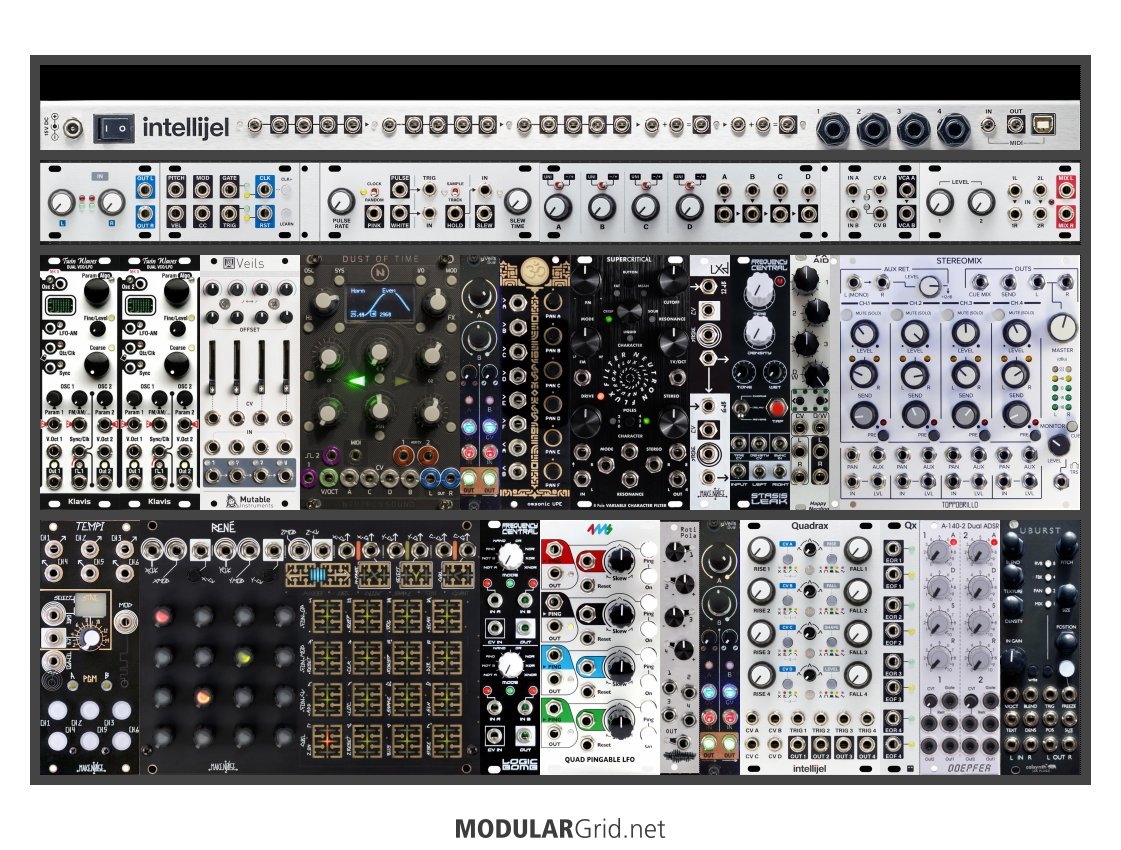Case size for what you want to do...uhhh, no. Also, mixing Intellijel and Pulplogic tiles on the same row...also no. Hmmmmm......
Ah...that graphic isn't a link. However, I looked at the other builds you've got, and I've got a pretty good idea as to how to make this work...let's see now...
(Later): Hot damn...OK, here's what I cooked up. Notice the absence of the Mordax...if you're going to use this as a teaching tool, it makes far more sense to use an external dual-trace scope so that everyone can clearly see what's going on. The Mordax screen is just too small to do this effectively; been there, done that.

OK...this got upped by me into a 7U Intellijel Performance cab, because trying to do what you wanted here definitely requires more space. I put the "utility bar" in, also, so you can see the adders and buffered mults while sorting out what this will do.
Tile row: Stereo input (and output, also) comes in via the 1/4" jacks, of which there's four. Intellijel's input and output tiles all come with cables to internally connect those to the 1/4" jacks, so 1 and 2 could be your inputs, and 3 and 4 your stereo outs. The MIDI module goes after that, internally connected to the USB port. Then I put in a Noise Tools for noise, master clocking, slewing and sample and hold. QuadrATT is next for attenuverting, submixing, and the like. Then a Stereo VCA allows you to control the amplitude of an incoming stereo signal that would be patched to the Output Mixer's 1st pair, with a second (effects?) stereo in for a final "return" tap over the stereo mix, with the VCA controlling that return level.
First row: Now there's FOUR VCOs here...a pair of Klavis Twin Waves mkii dual oscillators, with internal quantizing and multiple methods of sound generation. Each VCO gets a Veils channel, then there's a digital complex VCO from Neutron Sound which gets two more Veils-topology VCAs. After all of that, there's a six channel stereo panning module for spatializing your oscillators. The stereo VCF is a Supercritical Neutron Flux, offering numerous filter topologies in one module. This is followed by a pair of LPGs, then we're into the effects with a Frequency Central Stasis Leak, which goes from a mono in to a stereo out for reverb, chorus, and a tap delay. After this is a Happy Nerding FX Aid, which is stereo in and out. The Stasis Leak is specifically intended for the Toppobrillo Stereomix2, as it also has (under CV control) a mono send and stereo return. You have CV over panning and level as well, making this your final set of audio path VCAs.
Second row: Rene with Tempi, hence no Pam's. Tempi and the mkii Rene have a backplane connection that makes them behave more like a single module while still allowing extra clock outs and the like. After the Rene is a Frequency Central Logic Bomb, which has CV-controlled Boolean gates. LFOs are via a 4ms Quad Pingable LFO, which is capable of working over a range from low-end audio down to crazy-long periods (as in 71 MINUTES)...that'll be super-useful in generative configurations. The Roti Pola and the second dual VCA provide mixing, inversion, and amplitude control over modulation signals. After that, we have the Quadrax + Qx combo, a Doepfer Dual ADSR, then a small clone of Clouds that can ALSO be patched into the audio path above.
This makes a lot more sense, I think. The bases are all present here, which you want in a teaching system. Plus the signal paths are a lot more sensible, with the separate row functions and the left-right flow. Not exactly the same design as before...but I think I managed to majorly improve on the first attempt.
